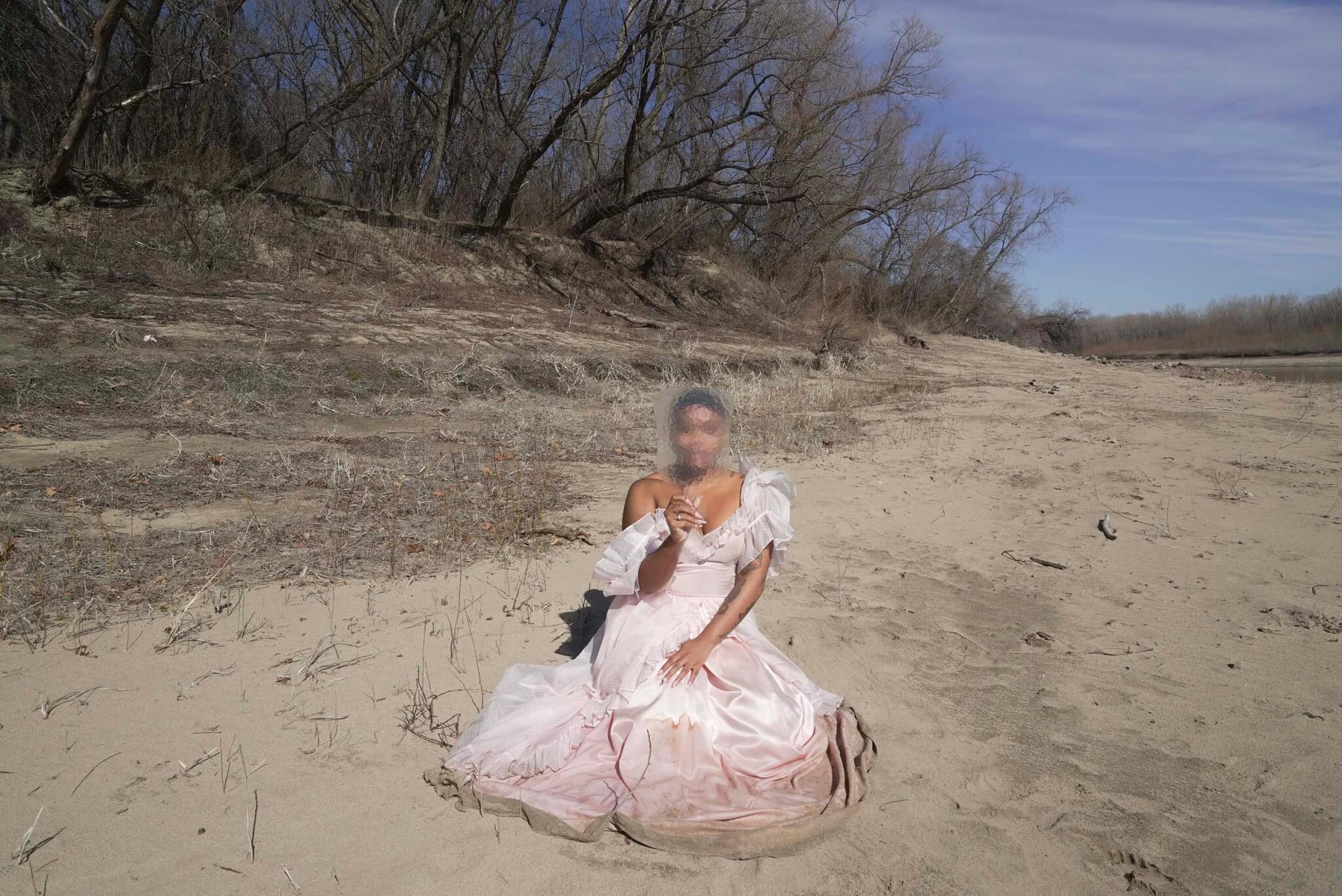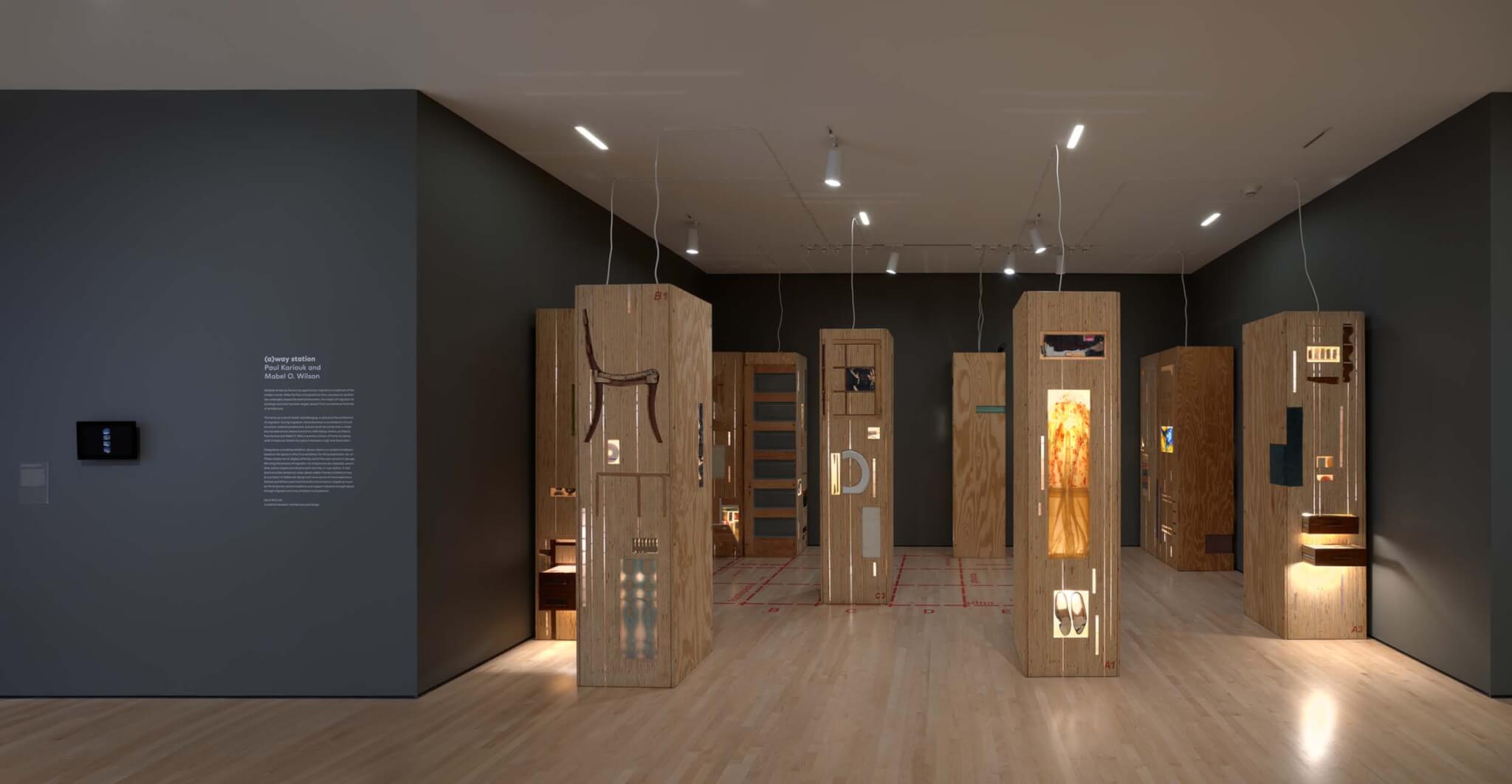Mark your calendars with these not-to-be-missed exhibitions in April
Spring is here! Here are four architecture—and “architectural”— exhibitions on view now across the country. From a retrospective on the artworks of Paul Goesch to a photography exhibition which explores the Black experience, an installation at SFMOMA on migration, and a look back at the work of Walter De Maria, these are April offerings you don’t want to miss.

Portals: The Visionary Architecture of Paul Goesch
Clark Art Institute
225 South Street
Williamstown, MA 01267
Through June 11
Interest in the libidinal culture of Germany’s Weimar Republic continues unabated. Rather than reflecting life in the tumultuous interwar period, the emergent neue sachlichkeit in visual art instead refracted the young republic’s political death drive. This same tendency had earlier gained expression in the prewar utopian designs of Bruno Taut, Paul Scheerbart, and Paul Goesch, who in 1919 became the short-lived Crystal Chain group. Goesch got the shortest end of the historiographical stick. With help from the Paul Goesch collection at the Canadian Centre for Architecture, this retrospective, curated by Robert Wiesenberger, foregrounds Goesch’s Fantasy Architecture series, whose hallucinatory premonitions of a universal ecclesiasticism tend toward the agglutinative. The exhibition locates the paper architect in the Weimar milieu, a somewhat curious move given that he spent most of the ’20s isolated (but artistically active) in a psychiatric clinic run by his brother. He was committed by the Nazis in the mid-1930s and murdered in 1940 as part of a euthanasia program.

A different kind of tender and the practice of overhealing
Graham Foundation for Advanced Studies in the Fine Arts
4 West Burton Place
Chicago, IL 60610
Through June 10
Katherine Simóne Reynolds’s first solo show just opened at the Graham Foundation. Reynolds’s Rust Belt vistas, particularly those of outer Brooklyn, Illinois, are sweeping yet also pointillist, evoking a landscape becalmed by history’s, or progress’s, arid neglect. “Lovejoy,” as Brooklyn was formerly known, is the oldest town founded by Black Americans, an act that symbolically initiated the healing of a troubled land. The fortunes of the new town waned over time, and in Reynolds’s photo- graphs, loss is inscribed in the brittle banks of the Mississippi River, turned-over growing fields, and a haunted copse. Yet humanity lingers in all these places, as seen by the phantom outline of a female body in sand or a roadside sign caught in an arboreal embrace. Conceptual embodiment is literalized in a lone wandering figure dressed in pink formal wear. These visual non sequiturs rise above easy juxtaposition. Reynolds, in maintaining a fidelity to place and elevating texture to a principle, images the Black experience, where hope and despair appear side by side.

Walter De Maria: Boxes for Meaningless Work
The Menil Collection
1533 Sul Ross Street
Houston, TX 77006
Through April 23
Eulogizing Walter De Maria, who died in 2013, the curator Jeffrey Weiss described “a seeming disconnect” between two facets of the artist’s self-representation. If De Maria, who is best known for his large installations, could be claimed by the land-art camp, his early work betrayed an allegiance to the Fluxus group, whose emptying ethos could be described as deadpan, minimalist, or, indeed, lobotomizing. Boxes for Meaningless Work alludes to the 1961 plywood sculpture of the same name, a variant on the archly flat-footed pieces De Maria was making at the time, but it also fashions a telos for an entire career. As the first retrospective of its kind, the exhibition overlays De Maria’s youthful formulation onto proto-Juddian receptacles and preparatory drawings for land-based interventions, as well as the late-stage stainless-steel sculptures. It’s a capacious framing that ultimately aims to shed light on an artist who was prone to assuming an anonymous guise. But in our current moment of “bullshit jobs,” it may end up saying a lot more.

(a)way station
San Francisco Museum of Modern Art
151 3rd Street
San Francisco, CA 94103
Through May 21
Tall, plumb boxes proliferate in (a)way station, an ongoing series by architects Paul Kariouk and Mabel O. Wilson. Different from De Maria’s meaningless vessels, these are like reliquaries or, indeed, suitcases. Some 10 wood towerlets occupy a single SFMOMA gallery, down from the 15 total produced for the project. This reduction, delineated in the wall text, is itself a statement on the exigencies of migration, which has its way with bodies and things. In the installation, domestic implements have been spliced and embedded in the sides of the stelae. The arm of a leather sofa, set flush against timber, asks to be caressed, while kitchen utensils, tools, and other hardware, caught within glowing resin blocks, appear estranged not just from their contexts but also themselves. That the stuff that makes up a life comes to stand in for human lives is, of course, the point. As climate change causes the number of global migrants to grow, political backlash from the most affected countries takes the form of ressentiment. And we know what happens next.


